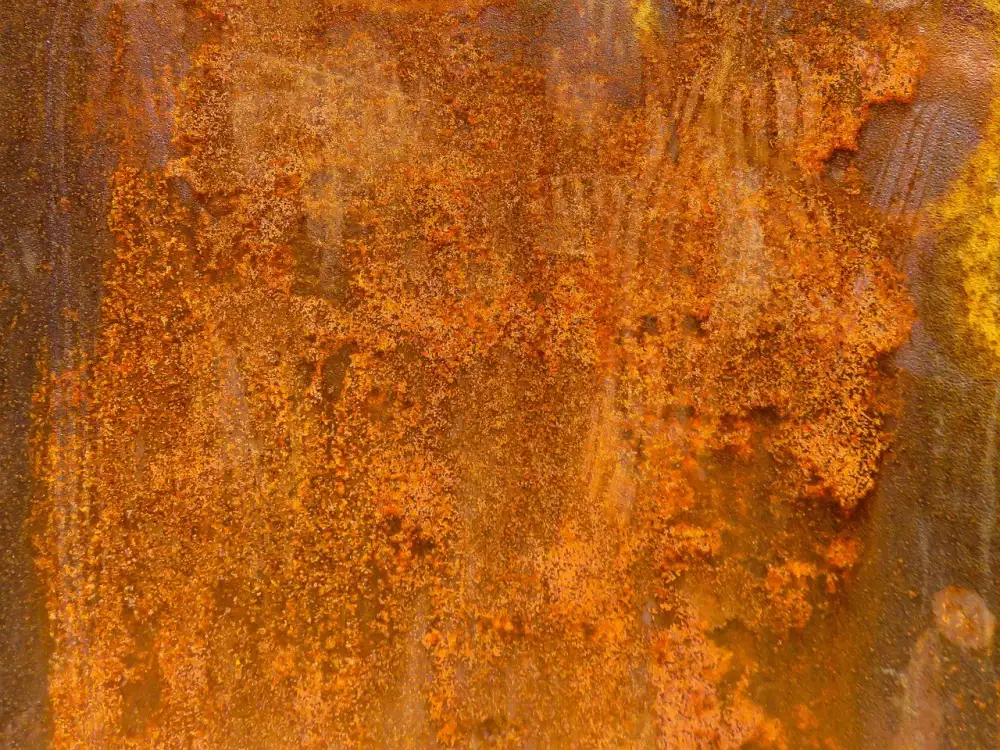Revive Your Rusty Cast Iron Skillet: Easy Steps to Remove Rust and Restore its Shine!

- Importance of maintaining a rust-free cast iron skillet
- Brief explanation of the cleaning process
- Gather the necessary supplies
- List of items needed for cleaning a rusty cast iron skillet
- Preparing the skillet
- Instructions on how to remove any food residue
- Removing the rust
- Step-by-step guide on using a gentle abrasive to eliminate rust
- Scrubbing and cleaning
- Techniques for scrubbing the skillet to remove remaining rust particles
- Rinsing and drying
- Proper methods for rinsing and drying the skillet thoroughly
- Seasoning the skillet
- Explanation of the seasoning process to prevent future rusting
- Storing the skillet
- Tips on storing the skillet to maintain its rust-free condition
- Recap of the importance of regular maintenance for a cast iron skillet
Maintaining a rust-free cast iron skillet is crucial for preserving its longevity and ensuring optimal cooking results. Over time, these versatile kitchen tools can develop rust, which not only affects their appearance but also compromises their performance. However, with a few simple steps, you can easily remove rust and restore your skillet's shine. In this article, we will guide you through the process of reviving your rusty cast iron skillet, so you can continue to enjoy delicious meals without any worries.
Importance of maintaining a rust-free cast iron skillet
Maintaining a rust-free cast iron skillet is crucial for preserving its longevity and ensuring optimal cooking performance. Rust not only affects the appearance of the skillet but also compromises its functionality. A rusty surface can contaminate food and make it stick, leading to uneven cooking. By regularly cleaning and removing rust, you can restore your skillet's shine and enjoy delicious meals without any worries.
Brief explanation of the cleaning process
The cleaning process for a rusty cast iron skillet involves removing any food residue, eliminating the rust, scrubbing and cleaning the skillet, rinsing and drying it thoroughly, seasoning it to prevent future rusting, and storing it properly.
Gather the necessary supplies
To revive your rusty cast iron skillet, you will need a few essential supplies. Make sure you have the following items on hand before you begin the cleaning process:
1. Coarse salt or baking soda: These gentle abrasives will help remove rust without damaging the skillet's surface.
2. Vinegar or lemon juice: The acidity in these ingredients helps break down rust and stains.
3. Scrub brush or sponge: Choose a brush or sponge with stiff bristles to effectively scrub away rust particles.
4. Paper towels or clean cloth: These will be used for drying the skillet after rinsing.
5. Vegetable oil or shortening: This is necessary for seasoning the skillet after it has been cleaned and dried.
Having these supplies ready will make the cleaning process much smoother and ensure that you can restore your cast iron skillet to its former glory.
List of items needed for cleaning a rusty cast iron skillet
To clean a rusty cast iron skillet, you will need the following items:
1. Steel wool or a stiff brush
2. Dish soap
3. Warm water
4. White vinegar
5. Baking soda
6. Paper towels or clean cloth
7. Vegetable oil or shortening for seasoning
Preparing the skillet
To prepare the skillet for cleaning, start by removing any food residue. Use a stiff brush or sponge to scrub away any stuck-on food particles. If the residue is stubborn, you can add a small amount of dish soap and warm water to help loosen it. Avoid using harsh chemicals or abrasive cleaners as they can damage the skillet's seasoning. Once the residue is removed, rinse the skillet thoroughly with warm water and dry it completely using a clean towel or paper towels.
Instructions on how to remove any food residue
To remove any food residue from your cast iron skillet, start by filling it with warm water and a few drops of dish soap. Let it soak for about 10 minutes to loosen any stuck-on food. Then, use a stiff brush or sponge to scrub the surface, making sure to get into all the nooks and crannies. Rinse the skillet thoroughly with warm water to remove all soap residue. If there are still stubborn food particles, you can sprinkle some coarse salt onto the skillet and scrub again. Once all the residue is gone, proceed to the next step of removing rust.
Removing the rust
To remove the rust from your cast iron skillet, start by applying a gentle abrasive such as coarse salt or baking soda to the affected areas. Use a damp cloth or sponge to scrub the rusted spots in circular motions. If the rust is stubborn, you can also use a fine-grade steel wool. Be careful not to scrub too aggressively and damage the seasoning of the skillet. Once all the rust has been removed, rinse the skillet thoroughly with warm water.
Step-by-step guide on using a gentle abrasive to eliminate rust
To eliminate rust from your cast iron skillet, follow these step-by-step instructions using a gentle abrasive:
1. Start by sprinkling a generous amount of coarse salt onto the rusty areas of the skillet.
2. Take a half of a lemon and use it as a scrub brush to rub the salt into the rusted spots. The acidity in the lemon will help break down the rust.
3. For tougher rust stains, create a paste by mixing equal parts baking soda and water. Apply this paste onto the affected areas and let it sit for about 10 minutes.
4. Use a scrub brush or sponge to gently scrub away the rust, applying more pressure if necessary.
5. Rinse off the skillet with warm water to remove any remaining residue.
By following these steps, you can effectively remove rust from your cast iron skillet and restore its shine!
Scrubbing and cleaning
Once you have removed the majority of the rust from your cast iron skillet, it's time to give it a thorough scrubbing. Using a stiff brush or scouring pad, scrub the skillet in circular motions to remove any remaining rust particles. Be sure to pay extra attention to any stubborn spots. You can also use a mixture of coarse salt and water as a natural abrasive. Scrub until the skillet feels smooth and free of rust. Once you are satisfied with the cleanliness, rinse the skillet thoroughly with warm water.
Techniques for scrubbing the skillet to remove remaining rust particles
To scrub the skillet and remove any remaining rust particles, you can use a stiff brush or a scrubbing pad. Make sure to scrub gently and in circular motions to avoid scratching the surface of the skillet. Focus on areas where rust is still visible, applying a bit more pressure if necessary. Rinse the skillet with warm water to remove any loosened rust particles. Repeat this process until all traces of rust are gone.
Rinsing and drying
After scrubbing the skillet, it is important to thoroughly rinse off any remaining rust particles. Use warm water and a sponge or brush to remove all traces of the abrasive cleaner. Make sure to rinse both the inside and outside of the skillet.
Once rinsed, dry the skillet immediately with a clean towel or paper towels. It is crucial to completely dry the skillet to prevent any moisture from causing new rust spots. If needed, place the skillet on a low heat burner for a few minutes to ensure it is completely dry.
Remember, even a small amount of moisture can lead to rust formation, so be diligent in drying your cast iron skillet after each use and cleaning session.
Proper methods for rinsing and drying the skillet thoroughly
After scrubbing away the rust particles, it is crucial to rinse the skillet thoroughly to remove any remaining residue. Start by running warm water over the skillet and using a gentle brush or sponge to ensure all surfaces are clean. Avoid using soap as it can strip away the skillet's seasoning. Once rinsed, dry the skillet completely with a towel or by placing it on low heat on the stovetop. Ensure there is no moisture left on the surface as this can lead to future rusting.
Seasoning the skillet
To prevent future rusting, it is crucial to season your cast iron skillet. Seasoning creates a protective layer on the surface of the skillet, making it more resistant to rust and enhancing its non-stick properties.
To season your skillet, start by applying a thin layer of cooking oil or shortening all over the skillet, including the handle. Make sure to coat both the inside and outside surfaces.
Next, place the skillet upside down in an oven preheated to 350°F (175°C). This allows any excess oil to drip off and prevents pooling. Place a baking sheet or aluminum foil on the lower rack of the oven to catch any drips.
Bake the skillet for about one hour, then turn off the oven and let it cool completely before removing. The heat helps bond the oil molecules to the iron surface, creating a durable seasoning layer.
Repeat this process two or three times for optimal results. Each time you season your skillet, it will become darker and develop a smoother surface.
Remember to avoid using soap or harsh detergents when cleaning your seasoned skillet as they can strip away the protective layer. Instead, use hot water and a gentle scrub brush or sponge.
By regularly seasoning your cast iron skillet, you can maintain its shine and prevent rust from forming, ensuring that it lasts for many years to come.
Explanation of the seasoning process to prevent future rusting
To prevent future rusting, it is important to season your cast iron skillet. Seasoning creates a protective layer on the surface of the skillet, making it more resistant to rust and providing a non-stick cooking surface.
To season your skillet, start by preheating your oven to 350°F (175°C). Apply a thin layer of vegetable oil or melted shortening to the entire surface of the skillet, including the handle. Make sure to coat both the inside and outside of the skillet.
Place the skillet upside down on the middle rack of the oven with a baking sheet or aluminum foil on the bottom rack to catch any drips. Bake for one hour.
After an hour, turn off the oven and let the skillet cool completely in the oven before removing it. The heat from the oven helps bond the oil to the skillet, creating a durable seasoning.
Repeat this process two or three times for optimal results. Each time you season your skillet, it will become darker and develop a smoother surface.
Remember to always store your seasoned cast iron skillet in a dry place to prevent moisture from causing rust. Regularly re-seasoning your skillet will help maintain its non-stick properties and protect it from rusting in the future.
Storing the skillet
8. Storing the skillet
After you have successfully removed the rust from your cast iron skillet and seasoned it, it's important to store it properly to maintain its rust-free condition. Here are some tips for storing your skillet:
1. Make sure the skillet is completely dry before storing it. Any moisture left on the surface can lead to rust formation.
2. Apply a thin layer of oil to the skillet before storing it. This will help create a protective barrier against moisture and prevent rusting.
3. Store the skillet in a cool, dry place away from any sources of humidity or moisture, such as sinks or dishwashers.
4. Avoid stacking other heavy objects on top of the skillet, as this can cause damage to its surface and potentially lead to rust formation.
5. Consider using a cloth or paper towel to cover the skillet while in storage, providing an extra layer of protection against dust and debris.
By following these simple steps, you can ensure that your cast iron skillet remains in excellent condition and ready for use whenever you need it. Proper storage is key to preserving its shine and preventing future rusting.
Tips on storing the skillet to maintain its rust-free condition
When it comes to storing your cast iron skillet, there are a few key tips to keep in mind in order to maintain its rust-free condition. Firstly, make sure the skillet is completely dry before storing it. Any moisture left on the surface can lead to rust formation. Secondly, apply a thin layer of oil to the skillet after each use. This will create a protective barrier against moisture and prevent rust from developing. Lastly, store the skillet in a cool, dry place with good ventilation. Avoid storing it in areas prone to high humidity or temperature fluctuations, as this can also contribute to rust formation. By following these simple storage tips, you can ensure that your cast iron skillet remains rust-free and ready for use whenever you need it.
In conclusion, maintaining a rust-free cast iron skillet is crucial for its longevity and optimal cooking performance. By following the easy steps outlined in this article, you can easily remove rust and restore your skillet's shine. Remember to regularly clean, season, and store your skillet properly to prevent future rusting. With proper care, your cast iron skillet will continue to be a reliable tool in your kitchen for years to come.
Recap of the importance of regular maintenance for a cast iron skillet
Regular maintenance is crucial for keeping your cast iron skillet rust-free and in optimal condition. By following the steps outlined in this article, you can easily remove rust and restore its shine. Remember, a well-maintained skillet not only improves cooking performance but also prolongs its lifespan. So, make it a habit to clean, season, and store your skillet properly after each use. With a little effort, you can enjoy cooking with your cast iron skillet for years to come!
Published: 27. 01. 2024
Category: Food



